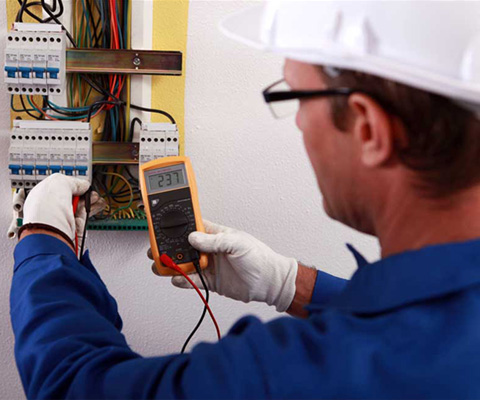CONSTRUCTION / ELECTRICAL WORK
Blocking electrical panels that house circuit breakers as shown in Figure 1 is a violation of both Occupational Safety and Health Administration (OSHA) regulations and National Fire Protection Association (NFPA) codes. These regulations require accessibility to the front of electrical panels to have a minimum of three feet of clearance and a minimum width to be the width of the equipment or 2.5 feet, whichever is greater. This assures that in case of an electrical emergency, there is a clear working space in front for quick access to the circuit breakers. Having up-todate directories of circuit breakers also saves time. The three electrical panels shown in Figure 1 lack the required three foot clearance.
The table blocking the panels further delays access in the event of an electrical emergency. Electrical panels contain multiple junctions of live wires and other components, and they are required to be accessible at all times. Panels are also required to have a “dead front,” per 29 CFR 1910.305(d). NFPA 70 describes a dead front as an area of the panel “without live parts exposed to a person on the operating side of the equipment.” All live components must be covered in this way so that anyone using the circuit breaker is safe from electric shock.
The large electrical panel shown in Figure 2a displays the hazard of a missing dead front. Not only are all the live components in this panel exposed, but the panel door’s lock is broken so that anyone might open the panel. Electrical panel boxes in commercial buildings should be locked and accessible by trained personnel only. This panel is located in a large dishwashing area, where a wet floor might result in electrocution. Such hazards present imminent danger and should be corrected immediately. Figure 2b shows the same electrical panel with a new dead front.


